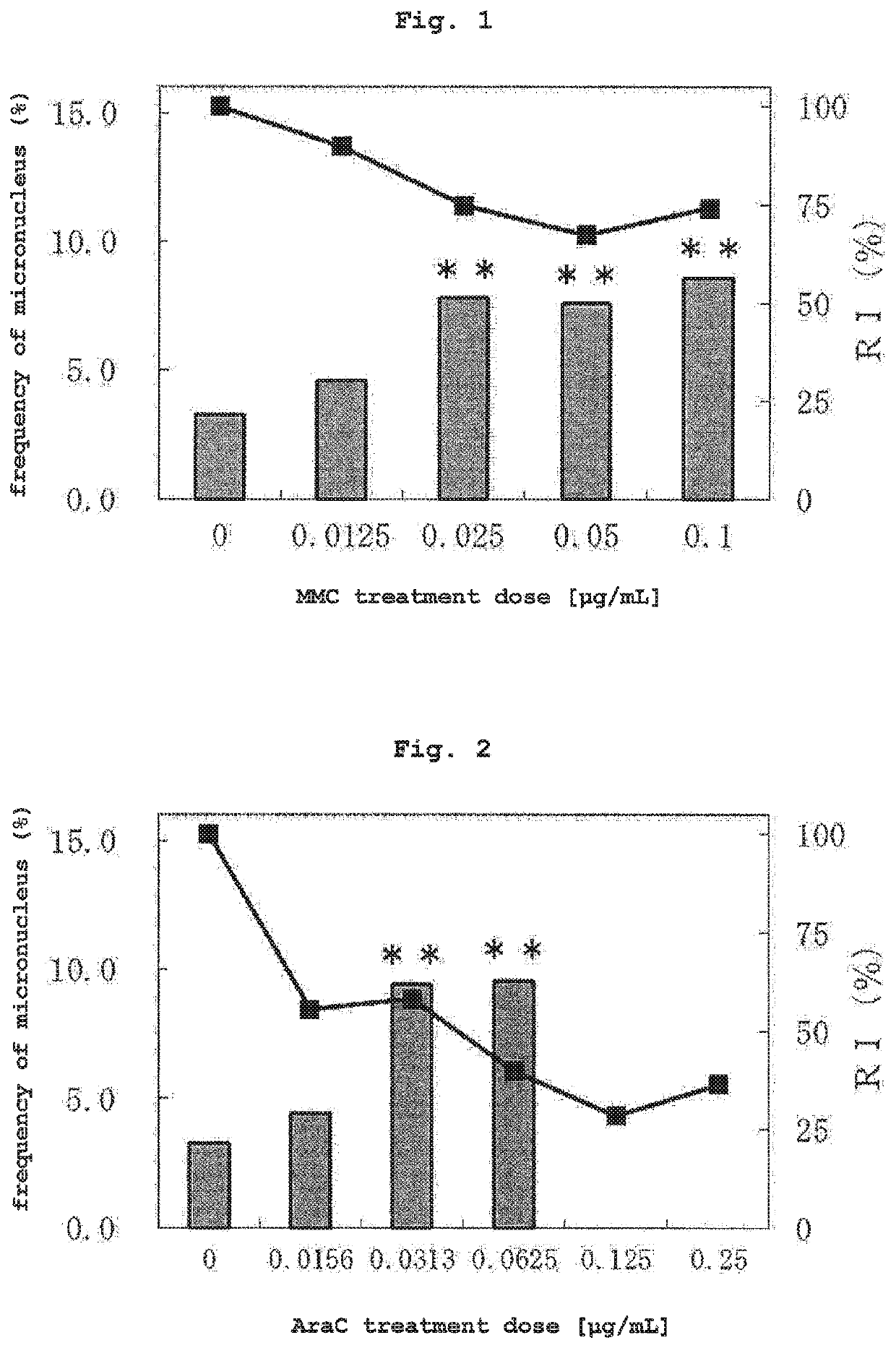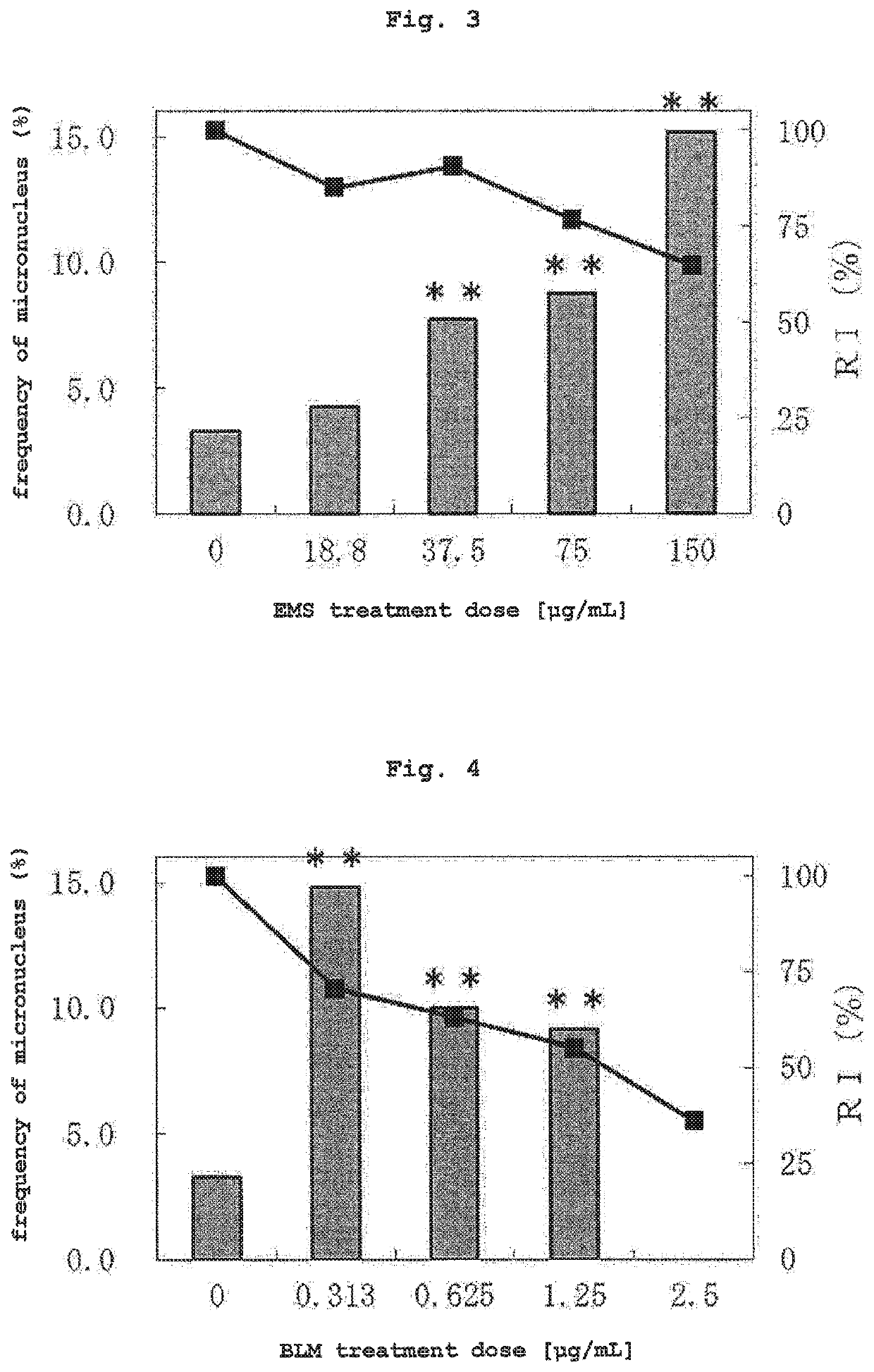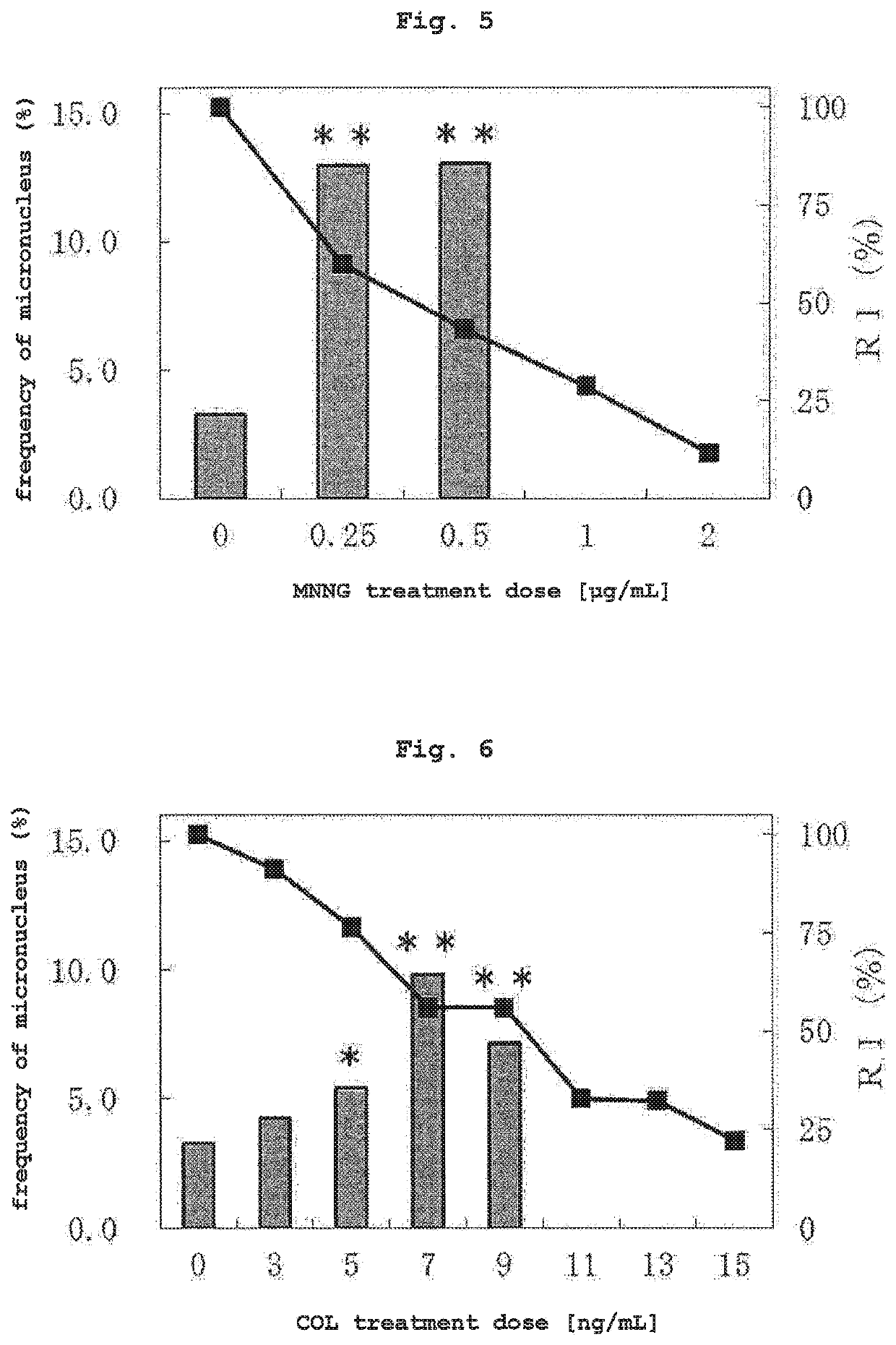Detection method for chromosomal abnormalities and method for evaluating inducibility
a chromosomal abnormality and detection method technology, applied in the field of detection methods for chromosomal abnormalities and methods for evaluating inducibility, can solve the problem of difficult to conduct in vivo genotoxicity tests on all the enormous number of chemical substances
- Summary
- Abstract
- Description
- Claims
- Application Information
AI Technical Summary
Benefits of technology
Problems solved by technology
Method used
Image
Examples
example 1
Division Kinetics of Human iPS Cell-Derived T Lymphocyte Stimulated with Anti-CD3 Antibody
(1) Human iPS Cell-Derived T Lymphocyte
[0111]Human iPS cell lines of “2” and “12” established in Kaneko Laboratory, Center for iPS Cell Research and Application, Kyoto University, from human peripheral blood T lymphocytes according to the method described in “Nishimura, T. et al. Cell Stem Cell 2013, 12, p 114-126” were induced to differentiate into T lymphocytes which are CD8SP (Single Positive) according to the method described in “Nishimura, T. et al. Cell Stem Cell 2013, 12, p 114-126”.
[0112]The obtained CDBSP T lymphocytes (the cells are hereinafter indicated as redifferentiated T lymphocyte) were subjected to proliferation stimulation under 6 conditions shown in (2). After proliferation stimulation, the cytokinesis inhibitor CytoB was added to prepare specimens (specimen b-g). The division kinetics thereof were evaluated by measuring the distribution of the number of nucleus per cell. As ...
example 2
In Vitro Micronucleus Test Using Human iPS Cell-Derived T Lymphocyte
(1) Human iPS Cell-Derived T Lymphocyte
[0125]As human iPS cell-derived T lymphocyte, redifferentiated T lymphocyte derived from human iPS cell line “12” described in Example 1(1) was used.
(2) Test Substance
[0126]As a test substance, 5 compounds of mitomycin C (MMC, CAS No. 50-07-7, Kyowa Hakko Kirin Co., Ltd.), cytosine arabinoside (AraC, CAS No. 147-94-4, nacalai tesque), ethyl methanesulfonate (EMS, CAS No. 62-50-0, nacalai tesque), bleomycin sulfate (BLM, CAS No. 9041-93-4, LKT laboratories) and 1-methyl-3-nitro-1-nitrosoguanidine (MNNG, CAS No. 70-25-7, nacalai tesque) were used as compounds that induce micronucleus resulted from chromosomal structural aberration, 2 compounds of colchicine (COL, CAS No. 64-86-8, Wako) and vinblastine sulfate (VBL, CAS No. 143-67-9, Wako) were used as compounds that induce micronucleus resulted from chromosomal numerical aberration, cyclophosphamide monohydrate (CPA, CAS No. 6055...
example 3
In Vitro Chromosomal Aberration Test Using Human iPS Cell-Derived T Lymphocyte
(1) Human iPS Cell-Derived T Lymphocyte
[0142]As human iPS cell-derived T lymphocyte, a redifferentiated cell for which a human iPS cell line established in Kaneko Laboratory, Center for iPS Cell Research and Application, Kyoto University, from human peripheral blood T lymphocytes according to the method described in “Nishimura, T. et al. Cell Stem Cell 2013, 12, p 114-126” were induced to differentiate according to the method described in “Nishimura, T. et al. Cell Stem Cell 2013, 12, p 114-126” is used.
(2) Test Substance
[0143]As a test substance, EMS is used as a compound that induces chromosomal structural aberration and MAN is used as a compound that does not induce chromosomal structural aberration. A test substance is used at the treatment dose (final concentration in medium) described in Table 5. For the treatment, a test substance is dissolved in physiological saline at a 100-fold concentration of t...
PUM
| Property | Measurement | Unit |
|---|---|---|
| concentration | aaaaa | aaaaa |
| culture temperature | aaaaa | aaaaa |
| culture temperature | aaaaa | aaaaa |
Abstract
Description
Claims
Application Information
 Login to View More
Login to View More - R&D
- Intellectual Property
- Life Sciences
- Materials
- Tech Scout
- Unparalleled Data Quality
- Higher Quality Content
- 60% Fewer Hallucinations
Browse by: Latest US Patents, China's latest patents, Technical Efficacy Thesaurus, Application Domain, Technology Topic, Popular Technical Reports.
© 2025 PatSnap. All rights reserved.Legal|Privacy policy|Modern Slavery Act Transparency Statement|Sitemap|About US| Contact US: help@patsnap.com



